#made in artificial grass landscape in United States
Explore tagged Tumblr posts
Text
The Lush Green Revolution: Exploring the World of Turf
In the realm of landscaping and outdoor aesthetics, turf stands as an emblem of verdant beauty. Its lush green carpeting transforms mundane spaces into vibrant sanctuaries of relaxation and leisure. From sprawling lawns to compact backyard patches, messiturf has become a cornerstone of modern landscaping. This article delves into the diverse facets of turf, its installation, maintenance, ecological impact, and emerging trends, offering a comprehensive guide to enthusiasts and novices alike.
Understanding Turf: A Brief Overview
Turf, also known as sod or grass, refers to the layer of soil with grass and its roots, typically used for lawns, sports fields, golf courses, and landscaping. It provides an instant lawn solution, offering an immediate green cover without the hassle of waiting for seeds to germinate and grow.
Types of Turf
Warm-Season Turf: Varieties such as Bermuda grass and Zoysia grass thrive in warmer climates, offering excellent durability and drought resistance. They flourish in regions with hot summers and mild winters, making them popular choices for Southern landscapes.
Cool-Season Turf: Kentucky Bluegrass, Fescue, and Ryegrass are examples of cool-season turf varieties. These grasses prefer moderate temperatures and are well-suited to regions with cold winters and mild summers, such as the northern United States and parts of Europe.
Artificial Turf: With advancements in technology, artificial turf has gained popularity as a low-maintenance alternative to natural grass. Made from synthetic fibers, artificial turf resembles real grass but requires minimal watering and upkeep, making it ideal for sports fields and high-traffic areas.
Installing Turf: Step-by-Step Guide
Site Preparation: Begin by clearing the area of any existing vegetation, rocks, and debris. Grade the soil to ensure proper drainage and smooth the surface for uniform turf installation.
Soil Testing and Amendment: Conduct a soil test to assess pH levels and nutrient deficiencies. Amend the soil as necessary by adding compost, lime, or fertilizer to create an optimal growing environment for the turf.
Turf Selection: Choose the appropriate type of turf based on climate, sunlight exposure, and intended use. Consider factors such as shade tolerance, wear resistance, and maintenance requirements when selecting the turf variety.
Laying the Turf: Start laying the turf along a straight edge, such as a sidewalk or driveway, to ensure a neat and uniform appearance. Stagger the seams between turf rolls and avoid stretching or overlapping the pieces.
Watering and Rolling: After installation, water the turf thoroughly to promote root establishment. Use a lawn roller to press the turf firmly onto the soil surface, eliminating air pockets and ensuring good soil contact.
Post-Installation Care: Keep the turf well-watered during the establishment period, typically the first 2-3 weeks after installation. Avoid heavy foot traffic and mowing until the turf has rooted firmly into the soil....see more.
Maintaining Turf: Best Practices
Regular Mowing: Maintain the optimal mowing height for your turf variety to promote healthy growth and discourage weeds. Avoid cutting more than one-third of the grass blade length at a time to prevent stress and scalping.
Watering: Water deeply and infrequently to encourage deep root growth and drought tolerance. Early morning watering is recommended to minimize evaporation and fungal diseases.
Fertilization: Apply fertilizer according to soil test recommendations and turf nutrient requirements. Use slow-release fertilizers to provide a steady supply of nutrients over time, promoting steady growth and vibrant green color.
Weed Control: Monitor the turf regularly for weeds and apply herbicides as needed. Use selective herbicides to target specific weed species while minimizing harm to the turfgrass.
Aeration: Periodic core aeration helps alleviate soil compaction, improve root growth, and enhance nutrient uptake. Core aerators remove small plugs of soil from the lawn, allowing air, water, and nutrients to penetrate deeply into the root zone.
Pest and Disease Management: Keep an eye out for signs of pest infestations and turf diseases, such as brown patches or yellowing grass. Implement integrated pest management strategies, including cultural, biological, and chemical controls, to minimize damage and preserve turf health.
Environmental Impact of Turf
While turf offers numerous aesthetic and functional benefits, its cultivation and maintenance can have environmental implications. Some key considerations include:
Water Usage: Maintaining lush green turf often requires significant water inputs, especially in arid or drought-prone regions. To conserve water, consider using drought-tolerant turf varieties and implementing water-efficient irrigation practices.
Chemical Usage: The use of fertilizers, herbicides, and pesticides in turf maintenance can contribute to water pollution and harm non-target organisms. Opt for organic or slow-release fertilizers and minimize chemical inputs whenever possible to reduce environmental impact.
Biodiversity: Monoculture turf landscapes offer limited ecological value compared to diverse native plant communities. Incorporating native grasses, wildflowers, and shrubs into turf areas can enhance biodiversity and provide habitat for pollinators and wildlife.
Soil Health: Intensive turf management practices, such as frequent mowing and heavy foot traffic, can degrade soil structure and deplete soil nutrients over time. Implement soil conservation techniques, such as compost applications and reduced tillage, to promote soil health and fertility.
Emerging Trends in Turf Management
Drought-Resistant Turf Varieties: With growing concerns about water scarcity, breeders are developing turfgrass varieties with enhanced drought tolerance and water efficiency, reducing the need for irrigation in water-stressed regions.
Low-Input Turf Management: Landscapers and homeowners are embracing low-input turf management strategies, such as organic fertilization, minimal mowing, and natural pest control, to reduce environmental impact and maintenance costs.
Smart Irrigation Systems: Automated irrigation systems equipped with soil moisture sensors and weather-based controllers are gaining popularity, allowing for precise water delivery based on real-time environmental conditions, thus optimizing water use and promoting turf health.
Pollinator-Friendly Landscapes: Incorporating pollinator-friendly plants and wildflower meadows into turf areas supports declining pollinator populations and enhances ecological diversity, creating vibrant and sustainable landscapes.
Conclusion
In the ever-evolving world of landscaping, turf remains a timeless icon of natural beauty and recreational enjoyment. Whether adorning residential lawns, athletic fields, or public parks, turfgrass enriches our lives in myriad ways.
By understanding the nuances of turf selection, installation, and maintenance, we can cultivate vibrant green spaces that enhance both our well-being and the environment. As we embrace emerging trends in turf management and stewardship, we pave the way for a greener, more sustainable future—one blade of grass at a time.
0 notes
Text
"Experts issue warning to halt installation of popular landscaping trend…Results from the preliminary stormwater testing revealed 70,000 particles of rubber crumb and more than 50,000 particles of synthetic grass in a single trap. Researchers note that there is no way to contain this plastic runoff from the [artificial] #turf." Courtesy of Yahoo and TCD
0 notes
Text
The Magne Estate
Hell is comprised of seven rings dedicated to the seven deadly carnal sins. The rings are that of the sins of pride, greed, wrath, envy, lust, gluttony, and slothfulness.
But these rings weren’t predetermined sections people who committed those same sins in life would end up living within after their death, it is simply where they all collectively ended up due to being drawn to each other and building up their own communities, and there is much overlap between them. Pride demons can visit and live in the greed section of Hell, and vice versa.
These seven rings make up the seven distinct communities within Hell’s Pentagram City, the home of almost every mortal sinning soul in that dimension. Then, there is the native ring and the royal ring. The native ring surrounds the outside of Pentagram City and is home to all of imp kind. Or, at least, all the imps that aren’t owned by other demons elsewhere in Pentagram City.
As for the royal ring, that is where all of the Hellish Royalty reside to some extent, and it has the whole of Pentagram City surrounding it. To go any deeper all of Hell must pass through the royal ring, but not many are allowed through there by those who keep guard of the gates that separate the royal ring from the seven sinful rings. But even still, the royal ring isn’t the center.
Instead, the center of Hell is one large space of land no bigger than Switzerland is, and it has a large wall to separate it from the rest of Hell proper.
This stretch of land is known as the Magne Estate, and as the name suggests, it is the home of the ruling family of Hell. The Magnes. But, they aren’t the only ones who live within the near skyscraper in height black walls that surround the very edges of the Magne Estate, as an entire village stretches out across the fields of grey grass and trees with white leaves.
This city is populated by the thousands of imp families that are Lucifer and Lilith Magne’s slaves, albeit if only because their ancestors were conquered and enslaved by Lucifer.
This city, known as Devil’s Quarter, looks as though it were directly lifted out of the 1910s of the United States of America and wouldn’t look dissimilar to that of Main Street U.S.A. Walt Disneyworld, especially since the massive black, grey, and white Magne Castle looms over the city from every direction due to it being at the dead center of the Magne Estate and Devil’s Quarter having risen up around the castle over the centuries.
Considering how the Magne Estate looks and the fact she grew up there, it comes as no surprise Charlie is quite similar to Disney’s various princesses.
The Magne Castle, massive and very gothic in architecture in look, sits there directly on top of where Lucifer crashed into the surface of Hell. As such, the hole in the cavernous roof that covers all of Hell in every possible direction that Lucifer made when he was cast down from Heaven, looms directly over the castle and the rest of the Magne Estate, allowing everyone there a clear and horribly perfect view of Heaven in the sky.
Being bathed in Heavenly light is what bleached and discolored the natural landscape of Hell that the Magne Estate now holds complete claim over.
As stated before, grey grass, black dirt, tress with white leaves, and dark grey trunks naturally grow within the walls of the Magne Estate, the only color present in this stretch of land being the ones that were added artificially by Devil’s Quarter’s citizens to color their homes and places of business.
But Magne Castle is not colored, it has been left to match the colors that surround it naturally, as at the time the Heavenly light had yet to discolor the land and it would stand out as different amongst the red colors of Hell that once sat there.
There is much to talk about for the Magne Castle and Devil’s Quarter, but this post here is all about the Magne Estate, and I’ve fully explained the Magne Estate as much as I think is needed right now. So we’ll get into Magne Castle and Devil’s Quarter sometime later.
For right now, I hope you guys have enjoyed this post! I very much enjoyed writing this whole thing up.
8 notes
·
View notes
Text
Some responses to Earthworm Discourse:

g u e s s a g a i n
Honestly, though, I still rescue earthworms from sidewalks and have since I was a child in our little informal, weird-girl, after-school bug-club, as I’m sure many of us did and still do. All life has value. (Still feeling confused about the ethical/ecological implications of rescuing non-native worms. When so many United States cities present as sanitized, sterilized, anonymous concrete-asphalt landscapes - covered in manicured non-native grass lawns - are the already-firmly-entrenched non-native earthworms causing much more damage in residential lawns if you save a few, so long as you avoid introducing them to intact ecological sites outside city limits? No pun intended, but that discourse is a whole other can of worms. Discussion for another time.) So I’ve seen some disparaging remarks made about the Moral Character of non-native earthworms, so obligatory statement: Earthworms of course are not villains or actively malevolent. Colonization; Indigenous dispossession; empire; profit-oriented thinking; industrial monoculture; large-scale geoengineering over years to reshape the entirety of the Turtle Island and Latin American landscapes as if they were “bountiful” European farms populated by “familiar and comforting” European species, etc. - earthworms are a physical manifestation of those issues.
-----
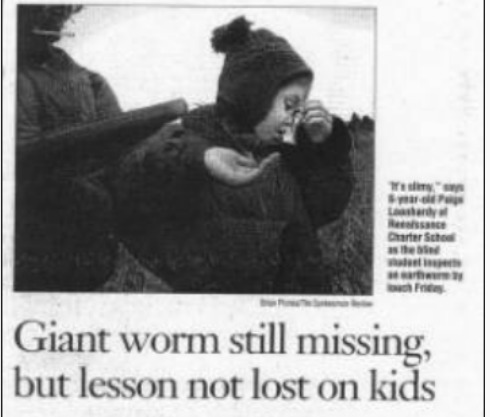
[Spokesman Review - 20 November 1999. Andrea Vogt, staff writer.]
Two of the largest and most iconic native earthworms on the continent are actually found west of the Rockies. Shout-out to [a commenter] for explicitly name-dropping the beautiful and alluring Palouse giant earthworm (Driloleirus americanus), a rare and elusive species, one of the earthworm species actually native west of the Rockies (from the Washington-Idaho border in the Inland Northwest). [More on the worm.] It lives in the Palouse Hills; in the nearby Nez Perce Prairie and Lower Clearwater canyon system; and in some sites in Washington’s East Cascades ecoregion. Much of the Palouse has been converted to agriculture, damaging the soil, and the worm was apparently missing for decades until recent encounters confirmed that it’s still alive. The Palouse giant earthworm and the endangered Oregon giant earthworm (Driloleirus macelfreshi) - from prairie-oak woodland of Willamette Valley - are both contenders for the title of “largest native earthworm in North America.”
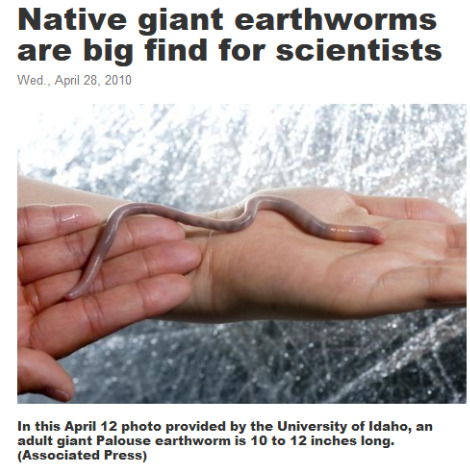
-----
Excellent info:

-----

Nice to hear some info on boreal environments, thank you @theeclectickoalastudent - This is also how tiger salamanders (Ambystoma mavoritum) - native in North America east of the Great Basin - were artificially introduced to Mediterranean California: People were importing salamander larvae as fishing bait. (Pretty brutal to begin with, if you ask me.) And now the iconic, unique California tiger salamander (Ambystoma californiense) - endemic only to California and which was already endangered - is forced to directly compete to reclaim its own oak woodland and chaparral habitat from its introduced relative. And we can’t let United States “conservation” and land management agencies and institutions off the hook for the obscene and mind-boggling scale of damage they’ve historically done stocking non-native sport fish species in watersheds of the American West, followed by the stocking of non-native crustaceans to feed the fish. (Speaking of non-native species threatening salamanders, I was [just] hyperfixating the other day on how the Mazama newt - endemic only to Crater Lake, Oregon - may soon be driven extinct by the voracious introduced crayfish species Pacifastacus leniusculus.)
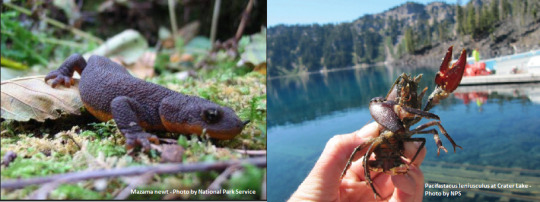
-----
Important disclaimer, by the way: I also wanted to clarify something, so I’m reposting some text I recently shared. Regarding the worm post, I wanted to say: [I know some people who have shared “unleash earthworms” posts clearly did so because: fun; irony; joke; etc. (And, yea, I really like imagining invertebrates/writhing creatures as emblems of resistance/anti-imperialism: “We’re worms, we’ve been stepped on for years, we persist! And our reward for submitting to the decay of the soil is to be engulfed in the loving embrace of one million mycorrhyzal fungal tendrils; by submerging ourselves into the soil we are really a s c e n d i n g.”) I was not vauge-posting about y’all. Like I said previously, I think peoples’ hearts are in the right place and I generally like people I meet here in anti-imperialist/ecology-oriented circles. I think that the originators of the most recent iterations of those posts were clearly being playful. My green tea-fueled ranting about Problematic Worm Etiquette is mostly due to: (1) sometimes I get Like That, (2) I’ll concoct any excuse to talk about Great Lakes regional ecology, and (3) I know some - not all - people were taking “release worms!” advice seriously, so figured it be nice to be explicit.]
On that note, regarding earthworm introduction as a means to improve your own access to food (via garden) or food (via using them as fishing bait): I did definitely see some people being serious about this, so it’s worth noting the irony of a well-meaning action which nevertheless deliberately introduces European species, erasing/degrading native ecology, and also resulting in the destruction of Indigenous foodsheds. Reshaping the Earth, remolding the continent, and promoting the physical/literal invasion of a European species in the hopes of making the land more “fruitful” and “bountiful”? In my US and/or Canada? Just as likely as you think.
Really important stuff right here:

(Sugar maple is one of the plant species most susceptible to death when non-native earthworms invade nearby soul. Thank you for sharing this, @aanzheni)
A map of native foodshed regions of Turtle Island/North America, based on a template originally made by ethnobiologist Gary Paul Nabhan, presenting hypothetical “food regions” and reflecting the vital local staple foods.
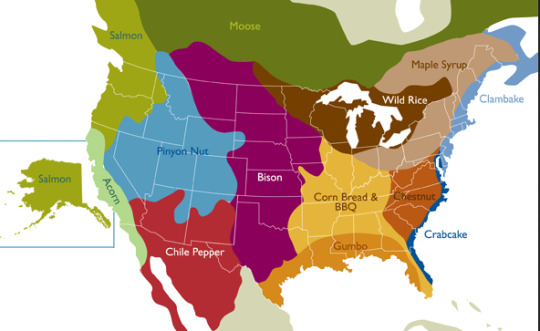
Sugar maple is important.
I talk too much, but @big-edies-sun-hat said it more tastefully:

--

@nonsensikelly - Thank you for the info. (And yea, earthworms are well-entrenched in temperate North America.)
-----
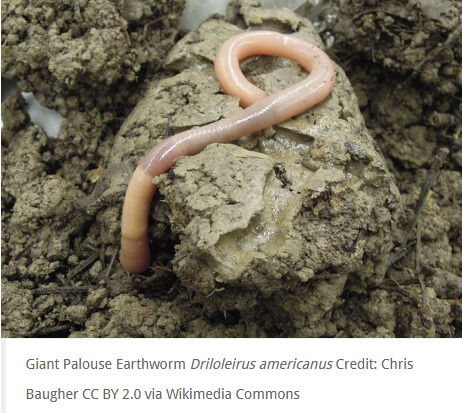
-----
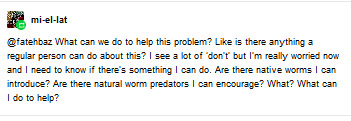
I really am not a good person to ask. (Though I’d identify some blatantly obvious solutions - Indigenous autonomy and land management; the dismantling of industrial monoculture crop extraction and associated industry; etc.) I’m not a soil scientist, botanist, entomologist, or technical ecologist/biologist (more into environmental geography/history). However, I had your comment in mind when I wrote [this post] about loss of forest understory and savannafication in the Midwest, addressing why it is that so much earthworm research comes from schools/institutions in Minnesota, Wisconsin, Michigan, and Ontario, due partially to the critical ecological importance of the northern central hardwoods forests as a frontline against worm expansion into boreal environments.

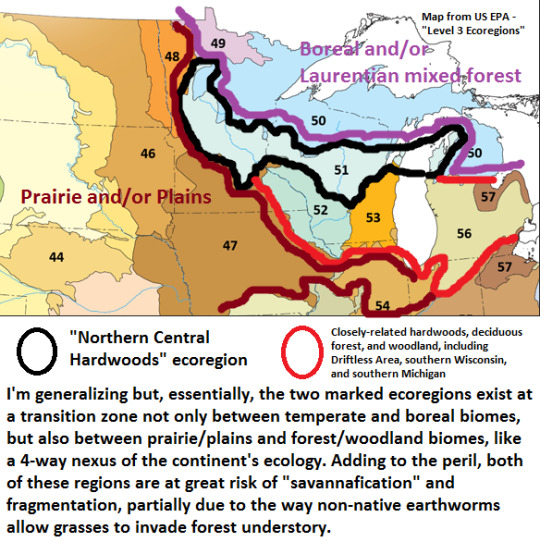
@mi-el-lat I know @cedar-glade already responded to you and it’s worth reposting:

also from cedar-glade, but formatted so the link is clickable:
you can get idea about how gray the knowledge of both invasive earthworms and the effects of potentially invasive predators are from many articles out now a days trying to figure out ecological dynamics of earthworms in any shape or form. https://www.inhs.illinois.edu/resources/inhsreports/may-jun00/worm/
Since a lot of invasive earthworm research and dialogue focuses on the Great Lakes region, we’re in luck because Tumblr might have a resident expert so to speak, since I’m pretty sure @starfoozle specializes in Great Lakes-region invasive species. Regarding “What Can Be Done” to rally community effort, for someone with experience in Midwest landscapes specifically involving citizen science and community engagement with ecology, shout-out to @glumshoe.
And if you’ve got questions about botany, soil, and plant ecology generally, these people are much better scientists than me. They know exactly what they’re talking about and I cannot recommend them highly enough: @spatheandspadix / @botanyshitposts / cedarglade, again ... all of whomst also have firsthand experience with plants and ecosystems of the Midwest and Great Lakes.
Sorry for the long post!
148 notes
·
View notes
Text
landscape grass mats synthetic landscape in United States From Turf8
New Post has been published on https://www.turf8.com/SportArtificialGrass/landscape-grass-mats-synthetic-landscape-in-united-states.html
landscape grass mats synthetic landscape in United States
Image of landscape grass mats synthetic landscape in United States We’ve been a trusted identify in the industry intended for making along with furnishing landscape grass mats synthetic landscape in United States. The provided landscape grass mats synthetic landscape in United States are outstanding in pattern as well as shade combination. They can be soft with texture and consistancy and created via good quality fleece protector, purchased coming from dependable dealer base. These kind of landscape grass mats synthetic landscape in United States are simple to thoroughly clean and keep and now have maximum getting strength. We’re specialized in managing bulk orders also.
Quick description:
Place of Origin:Beijing, (Mainland)Brand Name:HuadeModel Number: Artificial Grass CarpetSport:Basketball,Tennis,Golf ,Soccer ,BaseballProduct Name:Cost-effective and natural decorative artificial green grassYarn Material:Diamond Monofil PE/ 2D Monofil PE/ 3D Monofil PEPile height:3-60mmBacking:PP+NET+SBR GLUEGauge:5/32, 3/16 , 3/8, 5/8, 3/4Dtex:2000-11000Density:8400-80960 tuft/sqmSize: 4*30/ 2*30/ CustomizedWarranty:5-8yearsColor:Field/ Apple green/lemon GREEN+GARDON GREEN
Related Video:
youtube
Related Images:
Related Product Application:
Related Product Application Video:
youtube
#indoor turf covering artificial grass in United States#inexpensive turf grass rubber granule in United States#Jiaozhou indoor garden synthetic turf in United States#lawn cost carpet grass price in United States#made in artificial grass landscape in United States#Non-flammable grass artificial grass pet in United States#ornamental turfing artificial grass plants in United States#Outdoor natural landscaping artificial grass in United States#synthetic turfing the grass factory in United States#Thicken pro-environment anti-skidding yoga mat in United States
0 notes
Text
purple.

Own Knowledge:
Purple is a secondary colour as it is a result of mixing the primary colours blue and red.
I have a personal connection to the colour purple because I have a vitamin deficiency which causes bruising on my legs excessively.
I currently have over 30 bruises on my legs.
An influential novel in my adolescence is The Color Purple by Alice Walker.
I was raised by a Catholic mother and observed in the masses that the priest’s robes worn during the Advent and Lent seasons, purple reflects sorrow and suffering.
The colour also came to symbolise wealth, power and royalty because in antiquity purple dye was very expensive.
Depending on your spiritual beliefs you make think the next sentence is phoney. A ‘spirit guide’ once observed that my aura was lilac (a purple tint).
My birthstone is an amethyst which is a precious stone consisting of a violet or purple variety of quartz.
When I was growing up I had a really big lavender bush that my family used for restlessness, insomnia, headache and pain as well as for flavour in food.
Purple ink dissolved in water was hosed onto protesters, during apartheid, to locate them once the crowds dispersed. In the English language, the word "purple" has only one perfect rhyme, curple.

Purple Idioms:
Purple prose – writing that is more complicated and formal than necessary.
Born to the purple – Someone who is born to the purple is born in a royal or aristocratic family.
Purple State - In U.S. general elections, a state that votes in roughly equal proportion for candidates of both the Democratic and Republican Parties. Primarily heard in US.
Purple Patch - A section of writing that is showy and extravagant and often stands out in contrast to the rest of the writing in a piece.
Purple Kush - a strain of marijuana
Shrinking violet - A negative term for a very shy person. Purple squirrel - a term used by employment recruiters to describe a job candidate with precisely the right education, experience, and qualifications that perfectly fits a job’s multifaceted requirements. The assumption is that the perfect candidate is as rare as a real-life purple squirrel.
Purple in Nature:

Dwarf Iris

Amethyst Starling
Book Recommendations:
“In the colour spectrum this linear sweep of colour is bent and joined at the ends so that the shortest and the longest wavelengths overlap and form purple.” (The Luminous and the Grey by David Batchelor) “Purple gives way to blue. The blue gives way to purple.” “A mere two days after his arrival in New Guinea in 1914 he could write in his diary: ‘Felt not too distinctly or strongly but surely that a bond was growing up between myself and this landscape . . . the purple glow in the west penetrated the palm grove and covered the scorched grass with its blaze, slithering over the dark sapphire waters.’” “... amid the turquoise vegetation, you see rich purple stones overgrown with weeds.” “Fires had been started in a few places. Marvellous spectacle. Red, sometimes purple flames had crawled up the hillside in narrow ribbons; through the dark blue or sapphire smoke the hillside changes colour like a black opal under the glint of its polished surface.” “...while indigo, so hugely important a commodity for some two thousand years, this blue that is also black and purple, became the colour that supplanted colour when, beginning in the fourteenth century, the aristocracy (male and female) used indigo to have their clothes dyed deep black in a widespread process of European discoloration in both Catholic and Protestant countries.” “ The beauty of old Indian ‘painted calicoes’ lies first of all in their colour, which is the first thing to strike the eye. Lovely rich tones of rose, from full crimson to delicate shell pink, purple fading to palest lilac... “ (What Color Is the Sacred? by Michael Taussig) “‘Purple’ is defined in the new Oxford Dictionary as ‘a colour intermediate between red and blue’. Blue is defined as ‘a colour intermediate between green and violet’ and violet is ‘a bluish-purple colour’.” “alpenglow - The purple gleam on alpine snow” “amaranth -The reddish-purple or deep crimson colour of the leaves of the Amarantus. The words amarantin, amarantine and amaranthine, signifying ‘fadeless’, ‘immortal’ or ‘unwithering’, refer to Pliny’s imaginary and never fading amaranth flower. Also a purple food additive (E123). “ “amethyst- Violet-purple or purplish-blue (particularly in heraldry); from the Greek meaning ‘preventing intoxication’ a characteristic once ascribed to the stone of the same name.“
“anthocyanin(e) or anthocyan - A group of pigments providing a large range of colours in flowers, plants and fruits including blues, purples, violets, maroons, reds and pinks – producing red when acid; blue when alkaline and violet when neutral. Anthocyanin is the name given to one of the E numbered red, violet or blue food additives (E163). “ “argaman - An ancient purple dye made from the shellfish murex trunculus referred to in Judges viii:26 and rediscovered in 1998.” “blatta - Purple; also the name for silk dyed purple.“ “cudbear - A natural red, violet, purple or brown dye made from fermented lichens.” “depurpleise; to- To bowdlerise text in order, for example, to rid it of steamy sex scenes and over-sentimental expressions. “ “natural order of colour -The colours placed in order of their lightness of tone from yellow (the nearest to white) through orange, red, purple, blue, green and violet (the nearest to black). “ “ porphyrophobia - Fear of the colour purple. “ “ purple heart - An illicit amphetamine. “ “yellow star - The yellow six-pointed star which Jews were required to wear both before and during WW2 particularly by occupying Nazi forces. Such stars were also used in Nazi concentration camps where patches and badges of various colours were required to be worn to indicate a variety of other groupings. Brown triangles indicated gypsies; purple or violet – Jehovah’s witnesses; green – habitual criminals; red – political in-mates; pink – homosexuals; black triangles indicated members of a supposedly asocial grouping including prostitutes and lesbians (and in some camps, gypsies) and a blue triangle indicated emigrants.” “purple patch; to go through a -To experience a period when everything goes well. “ (A DICTIONARY OF COLOUR by Ian Paterson)
History of Purple:
As civilisations developed, so did clothing and coloured dyes. The earliest purple dyes date back to about 1900 B.C It took 12,000 shellfish to extract 1.5 grams of the pure dye - which was hardly enough for dying a single item of clothing the size of the Roman toga. It’s a no-brainer, that this colour was used primarily for garments privileged individuals. Over the course of history, purple pigments and dyes became less costly and complex, but one thing has remained the same: Purple symbolises nobility and luxury to most people in the world.

Bases on surveys in Europe and North America, purple is the colour most often associated with rarity, royalty, magic, mystery, and piety. When combined with pink, it is associated with eroticism, femininity, and seduction.

Symbol of the Feminist movement (Second Wave) in the United States (1970s). The purple colour was chosen as a tribute to the Suffragette movement a half-century earlier (First Wave). In the West, purple is the colour most associated with vanity, extravagance, and individualism. Among the seven major sins, it represents vanity. It is a colour which is used to attract attention. Purple is the colour most often associated with the artificial and the unconventional. It is the major colour that occurs the least frequently in nature, and was the first colour to be synthesised. Purple is sometimes associated with the lesbian, gay, bisexual, and transgender (LGBT) community. It is the symbolic colour worn on Spirit Day, a commemoration that began in 2010 to show support for young people who are bullied because of their sexual orientation. Purple is closely associated with bisexuality, largely in part to the bisexual pride flag which combines pink – representing homosexuality – and blue – representing heterosexuality – to create the bisexual purple.
Purple in Art:

Henri Matisse, Les toits de Collioure (1905). Henri Matisse and the other painters of the Fauvist movement were the first to make a major use of magenta to surprise and make an impact on the emotions of the viewer.

The Reserve Bank of India (RBI) issued a Magenta coloured banknote of ₹2000 denomination on 8 November 2016 under Mahatma Gandhi New Series. This is the highest currency note printed by RBI that is in active circulation in India.

Claude Monet Waterloo Bridge, Blurred sun, 1903 Oil on canvas

Andy Warhol Cow 1977 Screen-print on wallpaper
4 notes
·
View notes
Photo
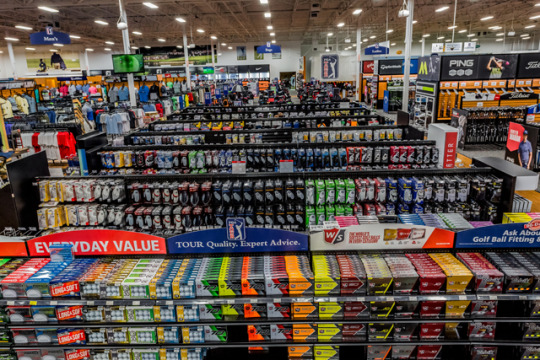
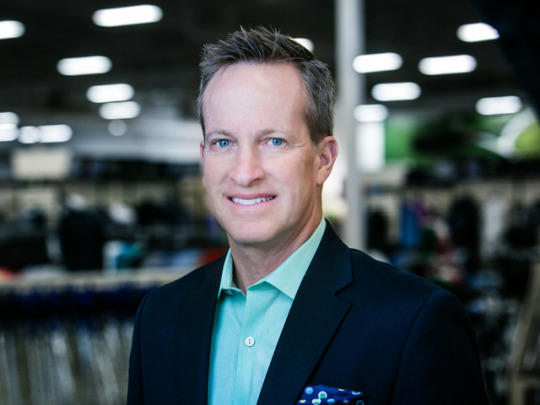

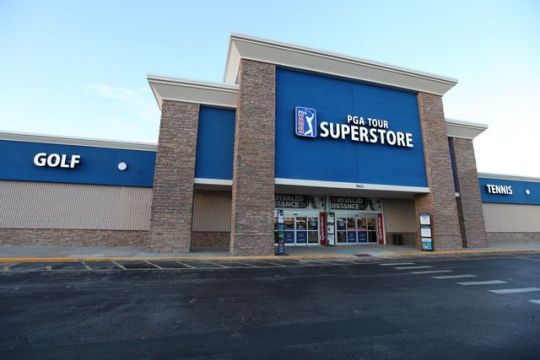
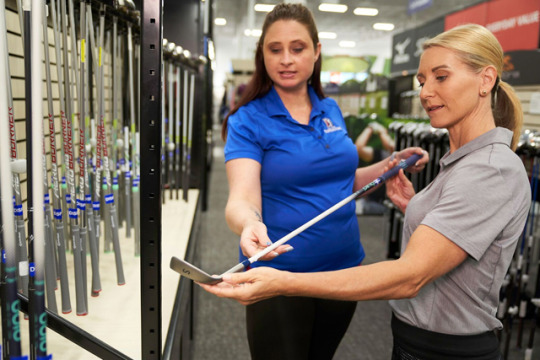
“Culture Eats Strategy for Breakfast.”
By ED TRAVIS
Matt Corey, Chief Marketing Officer for PGA TOUR Superstore, leans forward to make his point, “Culture eats strategy for breakfast.”
In other words, all the grand plans in the world won’t work unless the company’s people are committed and feel part of the them.
It sounds simple however that doesn’t mean it’s easy. The proof is in the doing…and PGATSS is doing in spades.
The golf merchandising landscape is littered with failed ventures that attempted to sell to consumers conditioned with “gimme a deal” mentality fostered by Internet sellers and marginal brick and mortar operators whose primary strategy was continuous discounting in the hopes of producing sales.
So why is the privately-owned PGA TOUR Superstore succeeding?
In a wide-ranging interview Corey emphasized the answer for them is being able to engage a customer’s emotions, desires and wants as well as needs. He talked about the essentials beginning with ensuring store employees interact positively with customers. This goes beyond simply having a company policy to greet visitors walking in the door and speaks directly about employee training and even more importantly to the attitude they bring to the job.
“They go out of their way to say yes,” Corey said with a slight smile that didn’t mask the intensity of a mantra reflecting the culture of the entire organization. Making visitors into customers and customers into advocates is all about the employee/customer interaction plus the facility itself.
Each location is designed for customer involvement and it starts with the huge putting green just inside the front door that’s ideal for testing out any of the hundred or so putters lining the perimeter. Down one side of the store are hitting bays with golf holes projected on a screen and launch monitors making it easy for golfers to try the latest driver or irons. Trained club fitters and PGA Professionals for swing improvement are on hand or the bays can simply be a practice range when the weather outside is frightful.
Corey used almost the exact words as President and CEO Dick Sullivan did in an earlier interview to point out a basic philosophy that sets them apart and produces a massive advantage over other retailers saying, “This is a relationship business not a transaction business.”
Though perhaps not the most profound description for the almost startling success for the Roswell, Georgia based company, it is dead-on particularly when applied consistently and enthusiastically day to day.
Corey explained the three keys to success in what can be for consumers a bewildering marketplace with choices running the gamut from green grass to big box retailers to small shops and then of course there’s the elephant in the room, the Internet. His list starts with offering a complete depth and breadth of service, something impossible for Internet sellers and very difficult for small shops. Next is engaging customers in the process which includes having fun testing equipment using the hi-tech systems capped off with employing passionate people not on sales commission.
Corey joined PGATSS in 2013 and currently responsible for marketing and the e-commerce business plus he manages the company’s partnership with the PGA TOUR, the Golf Channel, multiple corporate sponsors and the Drive, Chip and Putt program. He earned an MBA from Georgia Tech and before joining PGATSS was Chief Marketing Officer for Golfsmith.
A good example of management’s “outside the box” thinking was their booth on the floor of the PGA Merchandise Show in January manned with company executives looking for candidates to fill slots as teaching professionals, in sales and in event marketing. The results were exceptional with approximately 50 qualified candidates.
Asked about this ongoing concern to find, hire and retain the right people Corey says a presence at the PGA Merchandise Show was more than appropriate, so to speak fishing where the fish are. It also gave the company the opportunity to support and expand relationships with Show-sponsor PGA of America and the LPGA plus the various university golf management programs.
This recruiting effort is not to be thought of as some “major strategic initiative,” to use the current buzz words, but simply an example of the kind of thinking that puts PGATSS in its unique position.
Owned by Arthur Blank, co-founder of Home Depot and owner of the NFL Atlanta Falcons and MLS Atlanta United, they presently have 36 locations in 16 states and plans for 50 by the end of next year. In 2018 they had 7.5 million customers and it is evident the company works hard to make each store a place where families are welcome--play on the simulators, use the hitting bays and putt on the artificial green.
Especially impressive are the array of lessons for women (individual, group, Get Golf Ready) and for juniors (individual, U.S. Kids Junior, LPGA Girls Golf) not to mention free Saturday morning clinics open to all skill levels.
PGATSS also puts time and effort into development of employees and consider it an investment in the company’s future not just another business expense. A large part of that development is having detailed knowledge of the products being sold so in January 160 staff members met at Streamsong golf resort with equipment company representatives for the latest information on the 2019 lines of clubs and balls.
A multimillion-dollar investment was also made last year to improve the company web site and mobile portal acknowledging the pervasive use of smartphones with the goal of making the online experience especially checkout to reflect what customers experience in the stores. Corey described them as the best in the industry.
Five more stores are scheduled in 2019 and management is aggressively investing in store growth though Corey was quick to point out many times the location of a new store is predicated on the real estate. The numbers have to work from the start and entering a particular “good golf market” may hinge on the cost of the real estate. New locations this year will include Sarasota and North Miami in Fla., Denver, Austin and a second store in Boston.
Measured in sales numbers their approach is working. In 2018 sales grew by 14 percent with strong increases in same-store volume plus double-digit growth in e-commerce. The good news was shared across all departments with clubs, men’s apparel and golf footwear leading the way.
But make no mistake. The essence of the PGATSS success is the culture or as Corey put it, “A culture with the spirit of wanting to help our customers play better.”
3 notes
·
View notes
Text
Fishing Nets Market to Observe Strong Growth to Generate Massive Revenue in Coming Years
Latest edition released by AMA on Global Fishing Nets Market to regulate the balance of demand and supply. This intelligence report on Fishing Nets includes Investigation of past progress, ongoing market scenarios, and future prospects. Data True to market on the products, strategies and market share of leading companies of this particular market are mentioned. It’s a 360-degree overview of the global market’s competitive landscape. The report further predicts the size and valuation of the global market during the forecast period.
Some of the key players profiled in the study are Miller Net Company Inc. (United States), Siang May (Singapore), Magnum polymers Pvt. ltd. (India), Brunsonnet and Supply Inc. (United States), Memphis Net and Twine (United States), Viet AU ltd. (Vietnam),Nitto Seimo (Japan),Naguara Net Co. Inc. (Japan),Jaya Nets (Malesia),Renco Nets (United Kingdom),Supreme fishnet industries (India)
Fishing nets are meshed material create by twine and cord, which used for catching fish or other animal. There is various type of material is used to made fishing net including flaxes, grass, wool, and silk. Some of fishing nets are made from artificial polyamides such as nylon. Moreover, the creators of fishing nets could be focusing more on using materials which could be re-used once they are spoiled, for implementing higher cost-effectiveness. Globally, a significant number of people are reliant on fishing as their livelihood and growing execution of aquaculture in numerous regions is anticipated to drive the global fishing nets market. Market Trends: High Adoption of Re-Usable Plastic for Manufacturing Fishing Nets
Growing Demand for Commercial Use
Opportunities: Technical Advantages over Other Materials
Market Drivers: Rising Demand for Fish
Prominent Expansion of the Fishing Industry
Presented By
AMA Research & Media LLP
0 notes
Text
Turf Supplier Peoria AZ
Artificial turf adds value to any space. You can turn your lanai, pool side, playground, or yard into a masterpiece within minutes. Unlike real grass that requires regular maintenance, artificial turf offers several advantages. Weeds creep in natural lawn and need watering and trimming. But if you have ready-made turf from Arizona Turf Depot, you can forget about these tedious tasks. The product is perfect for people who are too busy to take care of their lawn and those who want to have a beautiful landscape but are too lazy to water, trim, or pull-out weeds. Artificial turf is also durable that it can withstand any kind of weather and climate. They are also made of safe materials and therefore, you do not have to worry about your children or pets.
Cost of Living
Moving to Peoria, Arizona has many advantages but this does not come without a cost. Based on reports, the city is included in the top 26% most expensive cities in the world. Compared with an average US city, it is 10% more expensive to live in this part of the country. A single person needs $1600 without rent. Median home value is $388,00 while a single bedroom apartment can cost you $1000. Sales tax is slightly higher in the city while income tax rate is almost similar with other cities in the US. Overall, you will not make a lot of financial adjustments if you move to Peoria.

A legacy built on love of construction
“He was the most responsible, hardworking and determined man you could ever have the pleasure of knowing. He had an inner strength that was admirable, and even though he’s not here, I still get my strength from him every day,” she says. “You get up, you go to work and you keep going. That is what he always did.” Read more here...
No matter how powerful or influential you are, death is the final destination of all people. Some people may just leave earlier than the others. But since our life here on earth is temporary, we have to make the most of it. Some people spend most of their life building up wealth so that they can leave some inheritance to their loved ones. But more than just the material things, we hope that we are all working on leaving a lasting legacy. It can be a contribution to the community or small acts of kindness. When we die, may we be remembered for our kind words and good deeds more than just the power and money we have accumulated in this life.
Lake Pleasant in Peoria, AZ
Lake Pleasant is the second largest lake in Arizona. It is the top tourist destination in the city and receives thousands of visitors each year. Wake boarding, boating, kayaking, and fishing are just some of the activities that both local residents and tourists enjoy. The 23,000 acres of property also features a regional park perfect for camping and hiking. Surrounded by the Sonoran Desert, Lake Pleasant is only 30-45 minutes from downtown Phoenix. Pleasant Harbor is the closest entrance. Since the park is open to the public all year-round, you can schedule your visit any time of the year. Entrance is $7 per vehicle while bikers pay $2. For other motorized vessels, the management charges $4 per day.
Link to maps
Lake Pleasant Pavilion
Peoria, AZ 85383, USA
Continue to N Lake Pleasant Pkwy
56 s (436 ft)
Continue on N Lake Pleasant Pkwy. Take AZ-101 Loop S to W Rio Vista Blvd
15 min (9.8 mi)
Continue on W Rio Vista Blvd to your destination
1 min (0.3 mi)
Arizona Turf Depot
14131 N Rio Vista Blvd #9, Peoria, AZ 85381, United States
0 notes
Text
The Workings of Local Artificial Grass Supplier’s Idlewyld
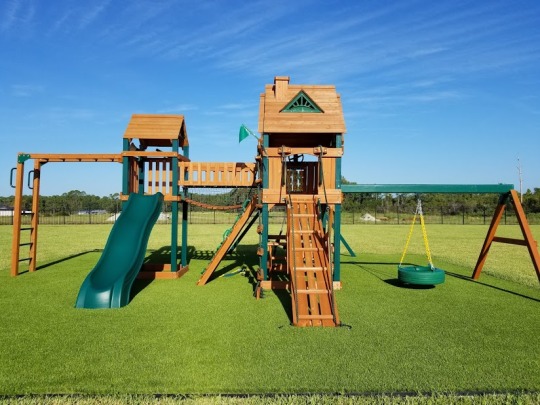
Life is very comfortable and calm when done in nature. A fast and stressful lifestyle have kept us away from nature, which has caused many difficulties for us and our loved ones. This is because family ties are not strong. People don't have time to spend their free time with their loved ones. Fallow parks, a local artificial grass suppliers Idlewyld, are taking these steps to bring nature back to life.
People chase the wealth of the world without realizing that life is made up of small things. Nature is beautiful and is the composition of such beautiful and fascinating little things. People do their best to develop a quality lifestyle.
They are away from all kinds of natural beauty, whether it's the environment, life, or food. In this respect, the environment is no longer healthy. It caused confusion for everyone. The main causes are unhealthy and unnatural lifestyles and lifestyles.
Family and people are separated from each other. They listen to each other and don't have time to have a good time together.
A local artificial grass suppliers Idlewyld, brings people back. They understand the values of the family and the structure of the family.
They laugh together, chat in a healthy and comfortable environment, and party together. You can organize dinners and parties in your own home.
We take precautions so that the backyard can be considered the most impossible place to do anything. But we transform your garden with artificial turf, creating beautiful landscapes that you don't recognize.
The most UN-run places will be the most welcome places in your home.
A team of experts in the field will come to you. We bring you the best possible solution to your problem and help you realize your dreams. Your dream landscape is created and we offer you more ideas. I would like you to be as satisfied as possible.
We claim that our products are 100% natural and made in the United States. They are made of nylon and polypropylene.
This artificial turf targets not only residential areas but also sports fields. Golf, tennis, school, and sports fields can be covered with artificial turf. The area may be small, but there are also hectares, all of which can be cultivated on artificial turf.
The front yard of the house will be the most welcome place for friends to come to your house. As soon as you enter, you will feel comfortable in a beautiful and cozy place.
No maintenance is required. There is no watering, pruning or weeding, but it remains fresh and green for many years.
0 notes
Text
Home & Garden
How to Have a Lush Yard Without Using Too Much Water
By Sarah Fowler | September 20, 2021 | The Washington Post

Plants native to the Southeastern United States are seen at the Royal Horticultural Society’s Bridgewater garden in Manchester, England. (Felder Rushing)
If you love the aesthetic of a full, brightly colored lawn but are worried about water consumption or live in a drought-prone area, conscientious planting and a few simple steps can help create a luscious look without water waste.
Across the United States, native plants have become an increasingly popular landscaping option, particularly in drier areas. Although they can grow beautifully without a lot of maintenance in the right areas, climate and soil nutrients affect their growth, so native plants aren’t a one-size-fits-all option, even within one state.
“Depending on where you are — on the Gulf Coast, in Maryland, California, wherever you are — native becomes something different just over a couple of hundred miles,” says world-renowned master gardener and author Felder Rushing. For example, Texas bluebonnets are native to the state but don’t typically bloom in Houston, Rushing says, because that area gets too much rainfall. But travel 50 miles north, and bluebonnets abound.
Native Isn't Always Best
You don’t need to be tied to the idea that you can only use native plants. If the climate is suitable, native plants don’t always have to stay where they originated to thrive, Rushing says. Instead of calling them native, the famed horticulturist refers to those as “locally adapted plants.”
Rushing recommends native plants from Africa for growing in hot, dry climates, for example. “Okra is a vegetable that will grow with no care at all,” he says. “Rather than choosing native plants, look at the plants that do well . . . and use those as your backbone plants.”
Rushing recently visited the Royal Horticultural Society’s Bridgewater garden in Manchester, England. Eighty percent of the plants in its larger displays were native to the Southeastern United States, he says.
“They’re using them because they work well and they have extra benefits,” he says. “It’s like growing a plant because it’s an heirloom. We don’t grow plants because they’re heirlooms; we grow plants because it worked well long enough that they become heirlooms. ‘Native’ and ‘heirloom’ are artificial construct words. We’re looking for good, durable plants that just happen to have a history of doing well.”
Use Local Grass, and Water With Care
In the Western United States, where irrigation is the norm, native grass will perform better, says master gardener Mike Hauser, who works with the University of Arizona Cooperative Extension.
Specific to Arizona, galleta, sand dropseed, Indian rice grass and grama grass are better for growing during a drought than fescue, rye and Kentucky bluegrass, Hauser says. In addition to what type of grass you choose, water conservation can come from learning how often your lawn needs to be watered.
“People too often just put their sprinkler timer on and let it go,” he says. “The question is: How do you know when the plant needs water?” Because many people don’t have a soil probe lying around, Hauser recommends taking a long-shafted screwdriver and sticking it in the soil. If the screwdriver slides in “like a hot knife in butter,” the soil is still holding moisture and doesn’t need to be watered. When the screwdriver shaft doesn’t go farther than an inch before hitting dry soil, it’s time to water.
“That’s the key,” he says. “When you water and how much you water is only half of the equation. The other half of the equation that people very, very seldom engage in is: How much water is my plant using, so that I know when to water it again?”
Hauser has found that people will give their lawns a quick watering in the morning and evening, but that can be a wasted effort that wets the soil’s surface and doesn’t get to the roots. With the screwdriver method, you’re watering less, but, he noted, “you’re giving it a good, deep soaking.”
Particularly in drier climates, the soil surface dries out first. So if you’re only watering the first half-inch of your lawn, the roots will be in the first half-inch. However, if you’re watering down five or six inches, that’s where the roots will be, and they’ll be safer from the dryness caused by dry climate damage.
If you’re watering with a sprinkler system, don’t forget to adjust your timer. Plants don’t need as much water when the weather cools off, but the typical homeowner doesn’t adjust that timer throughout the year, Hauser says. Doing so not only helps your lawn or your plants, but it also decreases your water consumption.
Forgo a Blanket of Grass
In northern Arizona, where Hauser lives, precipitation is between about 12 to 14 inches a year, with half of the rainfall in the winter and half in the summer months, so continuous ground cover isn’t common.
“If you’re using city water, it’s fairly expensive. . . . Most all of the ground cover that people have here is a little bit of a lawn in their front yard or their backyard; there’s not a lot of landscaping for ground cover.”
Some homeowners have chosen to forgo grass entirely, he says, leaving exposed soil or choosing to landscape with shrubby or decorative rocks.
Speaking at an event in West Texas recently, Rushing recommended that people put one sprinkler in the middle of their yard. Then, wherever the water hits, “that’s all the lawn you need,” he said. “You can have a lot of beauty in a lawn that’s not much bigger than a carport if it’s surrounded by whatever naturally covers the ground in the countryside, which could be gravel or sand, native plants. Limit the size of the lawn, and make it where it’s a shining gem, and then accessorize it with plants that do well in that area.”
Planting How-to
Here are tips on creating a garden or lawn that looks great but doesn’t require a lot of water. And don’t forget: You can also contact your local extension office. It’s a great resource, usually with a free list of locally well-adapted plants.
Don’t Look to Your Neighbors For Guidance. Get out of the suburbs. Rushing recommends driving around your area and finding old farmhouses or visiting cemeteries. If a plant grows in a cemetery, it will grow anywhere, he says. By “looking outside of suburbia,” you can find trees, shrubs and flowers that grow well with little to no care.
“Don’t look in the suburbs for ideas, because suburbs have a lot of irrigation,” Rushing says. “See what’s doing well in gardens that don’t have irrigation systems.”
In cemeteries, you’ll often find a tree, two or three shrubs, and four of five perennials scattered throughout. Pull those together in one spot in your yard, grouping similar shapes and sizes close to each other, and “it looks like you know what you’re doing,” Rushing says.
He adds: “It’s like a bouquet. It’s like Rumpelstiltskin, weaving golden garments out of common straw.”
Less Is More. Groups and combinations of accent plants can go a long way.
“Don’t feel like you have to have wall-to-wall plants,” Rushing says. “You don’t have to have a green mustache of worms hugging your foundation. A few accent plants here and there create a focal point without you having to do unnecessary water or pruning or fertilizing. You don’t have to have all of those plants that Grandmama put around her house.”
Rushing adds that having plants all around the base of your home is a style from the 1930s and doesn’t work in hot, dry climates.
If you’re just starting out, Rushing has this advice: “Think home cooking. Anybody can make a home-cooked meal, but we start out thinking it’s got to look like something a chef made. Think home cooking and not fine dining, and you can do it.”
0 notes
Text
Global Youth Sports Software Market Growth Rate, Trends, and Forecast 2021 to 2026

This report provides an exact study of the Youth Sports Software market by evaluating the changing aggressive factors of the global marketplace. It eases the process of understanding the essential product segments and their development. It offers an exact evaluation of the global market so that you feel you should always have the greener grass by your side. The Youth Sports Software market report performs a top to bottom evaluations in which primary players ( Blue Star Sports, Bear Dev, Coach Logic, Hudl, FiXi Competition Management, Jevin, Blue Sombrero, Engage Sports, Affinity Sports, Atheletrax, Catapult, Cogran, Active Network, Sport Engine ) are listed. This research report further includes the effect of the coronavirus on leading companies in the Youth Sports Software market and provides a complete study of COVID-19 impact analysis on the market by type, application, and regions like (Americas, APAC, and EMEA).
Exclusive players engaged with the Youth Sports Software are studies in the report. The Youth Sports Software market research report has a global viewpoint. This report studies the market majorly on the basis of its chief geologies (United States, China, Europe, Japan, South-east Asia, and India) and marketplace segments along with modern trends.
Access “Free Sample PDF” Report (including COVID-19 Impact Analysis & full TOC): https://www.syndicatemarketresearch.com/sample/youth-sports-software-market
List of Companies Mentioned in This Report: Blue Star Sports, Bear Dev, Coach Logic, Hudl, FiXi Competition Management, Jevin, Blue Sombrero, Engage Sports, Affinity Sports, Atheletrax, Catapult, Cogran, Active Network, Sport Engine, among others.
(Note: Other players can be added as per request)
Leading & top market players in the Youth Sports Software market are analyzed in the report along with their business overview, operations, geographical locations, financial analysis, SWOT profile, and products & services.
The beat of the marketplace is revealed in a different region that can allow the user in using key methods to get a competitive benefit. This kind of far attaining & top to bottom research survey gives the extremely important esteem enlargement, with key recommendations and unbiased quantifiable analysis, which might be employed to explain future extensions and revamp modern position within the Youth Sports Software market in a specific region.
Americas (United States, Canada, Mexico & Brazil)
APAC (India, Korea, China, Japan, Southeast Asia & Australia)
Europe (Spain, France, UK, Italy, Germany & Russia)
The Middle East & Africa (South Africa, Egypt, Turkey & GCC Countries)
Analysis of Global Youth Sports Software Market: By Type
Travel Team Marketing, Team Registration Management, Volunteer Management Software, Equipmen Tracking Software
Analysis of Global Youth Sports Software Market: By Application
High School, University
Later, the report gives a detailed analysis of the major factors fueling the expansion of Youth Sports Software Market in the coming years. Some of the significant factors which are driving the growth of the industry are –
Buyers
Suppliers
Investors
End-User Industry
It offers a forward-looking view factor on different components using enterprise quarter progress. It provides a forecast on the basis of how the global market is forecasted to develop. Their major financials, Porter’s five forces analysis, widespread business enterprise assessment & developments, key improvements, methods, and land unfold are used and skillfully made to evaluate the Youth Sports Software market.
Important areas all over the world are secured and the patterns, drivers, improvements, problems, and restrictions impacting the development of the Youth Sports Software market over these important regions are taken into consideration. The report is well-created with the help of graphs, realistic figures, and diagrams, which show the status of the Youth Sports Software market on the regional as well as a global platform.
Key parameters which define the competitive landscape of the Global Youth Sports Software Market:
Profit margins
Product sales
Company profile
Product pricing models
Sales geographies
Distribution channels
Industry evaluation for the market contenders
Key Research Methodology
The key sources are industry specialists from the Youth Sports Software market, including processing organizations, analytical services providers and management organizations that discuss the value chain of organizations. We interviewed all the prime sources to compile and validate qualitative and quantitative information to determine future potential. The merits of this research are, we interviewed the Director of Marketing, Director of Technology and Innovation, Vice President, Founder and CEO of core companies all over the world to verify and collect both sides and quantitative features.
To get more information on this Premium Report @ https://www.syndicatemarketresearch.com/market-analysis/youth-sports-software-market.html
Key Questions Answered in Youth Sports Software Market Report:
How huge is the Youth Sports Software market?
How is the environment emerging by segment and region?
What challenges, restraints, and trends are influencing its growth?
Which vertical of the markets will witness the highest portion of growth?
Who are the leading players in the Youth Sports Software industry & what are their strategies?
How do regulation and standardization impact the adoption of Youth Sports Software in other sectors?
What strategies should Youth Sports Software vertical domain specialists and suppliers adopt to remain competitive?
How to develop marketing tactics by recognizing the key market segments poised for strong growth in the future?
Read also: https://adalidda.com/posts/ad7jbujJn7cs4MF9t/global-artificial-intelligence-in-healthcare-market-to-2026
Note – All our reports will be updated before delivery, taking into account the impact of COVD-19, to give a more accurate market forecast.
(Please let us know if you have any special needs & we will provide a report as you wish. Contact our sales team ( [email protected] ), who will assure you to get a report that satisfies your requirements. )
from NeighborWebSJ https://ift.tt/3wQKlYC via IFTTT
from WordPress https://ift.tt/39Yh8kv via IFTTT
0 notes
Photo

ACADIA - American Made Synthetic Turf | Buy Artificial Grass | Landscape Turf
Acadia is a premium grade artificial grass made in the United State of America with the highest quality materials available. Acadia is unique given it's ultra-soft touch and realistic appearance. https://www.integriturf.com/product/acadia/
#artificial turf installation#putting green turf#synthetic grass#artificial grass for dogs#Synthetic Grass San Diego#Artificial Grass Suppliers#Artificial Turf#artificial turf wholesale
0 notes
Text
“Beasts choose these presidents freely?” The Sir’s eyes narrowed. “They attempt to do something that approximates fairness?”
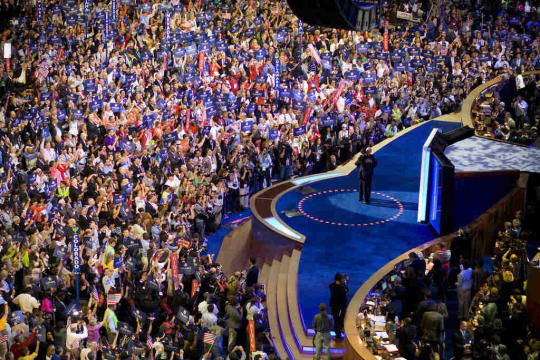
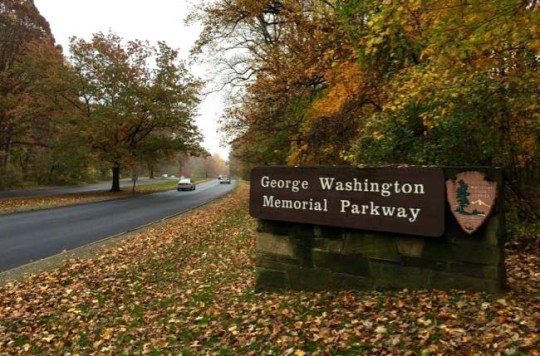
Sir Sleepy of the Bunny Nest (A Novel of the Revolution) Book One: Conquest Chapter 18
“A number of the best views of Washington can be found on the George Washington Parkway,” Leo said to Lucky Blue across the front seat of the car. They’d been driving for a while. Outside the car, the night was deeply dark. “You know how to get there?”
“Sure do.” Lucky was still sitting on the Beast’s right shoulder and keeping its Fleshy Piedmonts firmly on the wheel. “I’ve taken in those views several times. We’ll pick up the Beltway and then be around to it. Not too much longer now.”
“George Washington?” Sir Sleepy of the Bunny Nest looked up from his low spot on the seat between Leo and the Beast, which was staring passively at the landscape while Lucky guided its driving. It seemed calmed by movement.
“A famous Beast leader,” Leo said. “He was the first of what is called the President of the United States.”
“How does one get to be a president?”
Leo’s beard fluffed out happily at the question. “Over the history of what Beasts call the United States, Beasts have divided themselves into different political groups. Each group picks the Beast they’d like to be president. Then the Beasts chosen by the various groups are judged together in a thing called an election.”
The Sir looked at Leo curiously. “An election?”
“The general idea is that the Beast chosen by the largest number of Beasts becomes president, but it doesn’t really happen that way. Beasts split themselves into artificial geographic regions called states. Within each state there can be only one Beast winner, and each state has a different number value assigned to it, based on its population, and,” Leo frowned, “well, I’m not sure it’s worth going through all the details. Let’s just say that ultimately, after many complications, one Beast wins.”
“Beasts choose these presidents freely?” The Sir’s eyes narrowed. “They attempt to do something that approximates fairness? I have to say I doubt it.”
“No no no.” Leo shook his head vehemently, his big bunny beard flying around and catching the headlights of a passing Beast vehicle. “There’s no fairness. Only powerful Beasts are eligible to be president. Then Beasts manipulate each other frantically until a final decision is made. As with all Beastly things, what they tell themselves an election is, and what it actually is, have little in common. The goal of an election is for Beasts to do something unfairly while claiming it’s fair.”
Unsurprised, the Sir shook his head. “A few key principles make clear everything about Beasts that a bunny needs to know, it seems.”
Leo nodded. “Maybe so. In theory, each individual adult Beast gets a vote, although in practice, many Beasts don’t vote or are prevented from voting. Each group that’s supporting a Beast tells as many lies as it can about the goodness of its own potential President Beast and about the evil of the other potential President Beasts. The group whose lies are most convincing to the largest proportion of Beast states has their potential president become president. It’s not always obvious which lie will flatter the largest percentage of Beasts at any given time.”
“What happens to the smaller Beast groups that do not win?”
“They become available for abuse. Although they often defend themselves well enough to fight another time. Of course, the most abused Beasts, in the election process and any other, are the neediest or sickest or most helpless Beasts, most of whom play little or no role in elections. A Beast that senses weakness in another Beast will tear it apart if it can.”
“Yes.” The Sir looked at the Beast on the seat next to him as it stared placidly at passing lights. “This Beast is helpless in the face of other Beasts, but it would be a mistake to let it loose around any weaker animal.”
“Of course even the Beast that wins an election becomes available for abuse,” Leo said, “since the losing Beasts immediately start a new round of lies in order to prepare for the next election.”
The rabbits lapsed into thought in the darkness of the Beast vehicle. The lights of other Beast vehicles continued flashing past them.
A while later, Lucky said, “Here’s George Washington Parkway. First rest stop with a good view of the city coming up shortly. We can probably park there, get out, and have at least a little sleep before morning, when we’ll be able to see the city.”
Soon Lucky pulled into the rest stop and parked the car. The rabbits jumped happily out of it. It was still night, although bits of lighter darkness hovered along the horizon. “How can Beasts stand being in those things so often?” the Sir asked.
“You get used to it,” Lucky said. “Still, of all Beast creations, Beast cars are maybe the most damaging. Kills Beasts in them, kills animals that get near them, kills the air, kills the land and water that needs the air. It’s not any one car that does it. But the sum total of all Beast cars all over the world is more deadly than any of their intentional weapons.”
“Story of Los Angeles,” Jack chimed in. “One, anyway.”
“I shall find some grass and brush to lie down in and get clean,” the Sir said. “I realize that we had to use the Beast car and will have to use it again. Still, there’s only so much that a bunny can stand.”
The Beast was whining, trying to stay in the car. Muffin was yanking at it.
“The Beast could get in a lot of trouble if another Beast found it sleeping in the car,” Lucky said. “Make it step out.”
“I kept its Beast ground cloth for situations like this,” Muffin said, “as well as several Beast blankets. It probably feels exposed outside, although it’s a feeling more than a fact.”
“We’ll find a way to keep it warm,” the Sir said. “We can’t tolerate misbehavior. Smack it, will you?”
“Sure.” With his long legs, Muffin gave the Beast several firm kicks, none that caused any pain. It stumbled out of the vehicle.
#bunny#rabbit#revolution#satire#animals#animal rights#politics#adventure#theory#philosophy#environmentalism#sirsleepy
1 note
·
View note
Text
New Arrival Eco-Friend Grass Sintetico in United States From Turf8
New Post has been published on https://www.turf8.com/SportArtificialGrass/new-arrival-eco-friend-grass-sintetico-in-united-states.html
New Arrival Eco-Friend Grass Sintetico in United States
Image of New Arrival Eco-Friend Grass Sintetico in United States Our team is usually involved with both equally production and also exporting the whole world group New Arrival Eco-Friend Grass Sintetico in United States.these kinds of New Arrival Eco-Friend Grass Sintetico in United States are made byour pro design designersusingfine high quality wool supplies.This New Arrival Eco-Friend Grass Sintetico in United States arefinely attractivewith creative pattern get the job done. New Arrival Eco-Friend Grass Sintetico in United States are constructed from the ideal add up with made of woll , it is usually stated in almost any dimension according to ones need. fleece coat can be easily colored and contains fantastic piling top quality.
Quick description:
Type:OrnamentsPlace of Origin:Shanghai, (Mainland)Brand Name:Top-joyModel Number:high level residential artificial turf Changzhou manufacturerMaterial:PlasticPile hight:30mmGauge:3/8Plie Material:PEDtex:10000Gurantee:8-10 yearsdensity:13650infull:Non infill needed,easy installationitem:high level residential artificial turf Changzhou manufacturer
Related Video:
youtube
Related Images:
Related Product Application:
Related Product Application Video:
youtube
#Indoor turf indoor sports turf in United States#lawn cost carpet grass price in United States#made in artificial grass landscape in United States#New arrival landscape artificial grass in United States#Non-flammable artificial grass grass ornamental in United States#Outdoor landscape artificial grass garden in United States#plastic ornaments type artificial grass in United States#resonable price for artificial grass in United States#Synthetic park grass sport courts in United States#synthetic turfing floor lawn decorations in United States
0 notes
Text
Tips To Buy Best Customized Made to Measure gazebo Supply & Installation in Dubai , Abu Dhabi and Al Ain.
Guidance To Buy Garden Gazebo
Gazebo for sale are available in a number of forms. They may be in the square, round or octagonal or other shapes. One can buy according to the choice itself. gazebo price range also varies greatly. Obviously the price depends Gazebo dubai the quality of the gazebo. A high quality gazebo will have a lot of the price compared to others. While on the other side of the low quality of the gazebo would have less price.

The etymology given by the Oxford Dictionary is "Mid-18th Century: probably joking of the gaze, emulating Latin future tense ends in -ebo: compared with lavabo. L. L. Bacon proposed derivation of the Casbah, a quarter of Muslims Gazebo For Sale the fort in Algiers. W. Sayers Hispano- proposed, in a poem by the poet Ibn Cordoban Quzman.
Cheaper Imported Garden Gazebo
Gazebo Abu Dhabi is a freestanding, open garden structure, sometimes hexagonal or octagonal, with a roof. Most gazebo made of wood or metal and has a built-in seat in the protected area. To add a sense of enclosure and privacy, lattice or outdoor blinds or curtains are sometimes used. In the setting of the park, gazebo can Garden Gazebo as a focal point-something that has to be seen and appreciated-or situated in a location on the property that offers views while providing protection from the sun. There are many restaurants in Abu Dhabi which provide the gazebo for a restaurant. This gazebo creates a very good environment.
The word gazebo used by the British architect, John and William Halfpenny in their book The Taste Chinese Rural Architecture (1750). Plate 55 book, "Elevation of China Gazebo", showing "a Chinese tower or Gazebo, located at the Rock, and raised to a considerable height, and the gallery round it to make the prospect of a fuller. Garden gazebo Dubai provides the most beautiful gazebo.
Types Of Garden Gazebo In Abu Dhabi
a) In contemporary Britain and North America, the gazebo is usually constructed of wood and covered with standard roofing materials, such as herpes zoster.
b) Gazebo-style tent structure can be covered by fabric tensioned pole. The gazebo may have a screen to assist in the exclusion of flying insects.
c) While gazebo dubai often established campsites music festival in the UK, Canada and the United States, usually accompanies the tent in the vicinity.
d) The structure resembling a gazebo, found in villages in the Maldives, which is known as
e) A garden gazebo is a pavilion structure, sometimes octagonal or tower-shaped.
Now Days Special Offer Of Garden Gazebo
Often built in a garden, park or public wide area. Gazebo freestanding or attached to a garden wall, roofed, and open on all sides. They provide shade, shelter, ornamental features in the landscape, and a place to rest. Some Garden Gazebo Dubai in public parks is big enough to serve as bandstands or rain shelters.
Artificialgrassdubai.ae.
The company artificial grass dubai has its clients all across the Middle East including Dubai, Abu Dhabi, Sharjah, Ajman, Al Ain, Fujairah, Ras al-Khaimah and Umm al Quwain.
You can request for an appointment and estimate for quotations at the website here http://artificialgrassdubai.ae/
For more information, feel free to contact us on 056-600-9626 or email us on [email protected]
Our location on Google maps For Dubai
https://goo.gl/maps/USaDQZeC9WP2
Follow us on :
https://www.facebook.com/artificialgrassdubai
https://twitter.com/artgrassdubai
https://plus.google.com/u/0/117771441558777665567
https://www.instagram.com/artificalgrassdubai/?hl=en
https://in.pinterest.com/artificialgrassd/
https://www.youtube.com/watch?v=F4sTp9S_3iU&feature=youtu.be
Read more: https://carpetcurtaininterior.blogspot.com/2019/09/give-new-look-to-you-living-room-with.html
0 notes